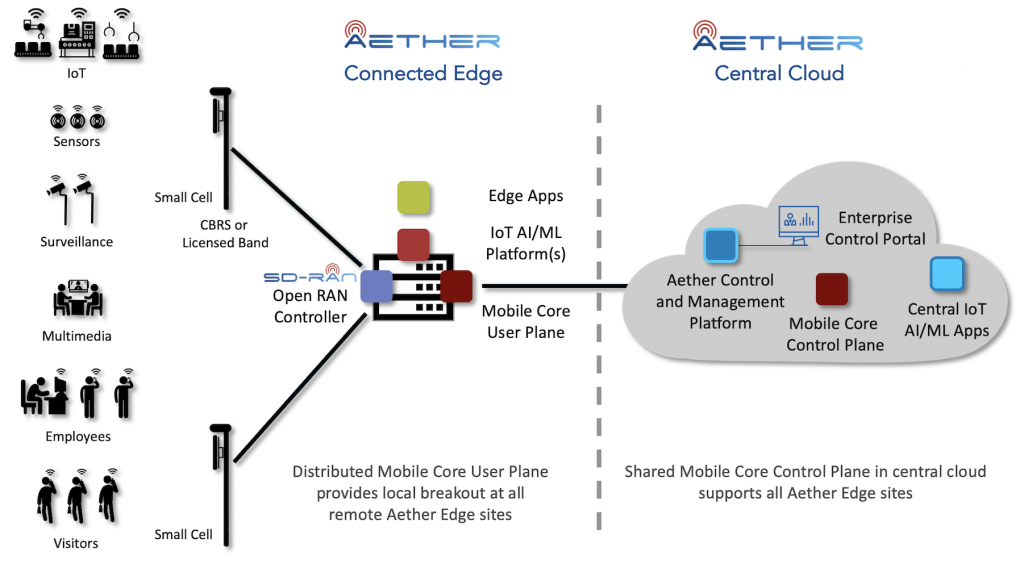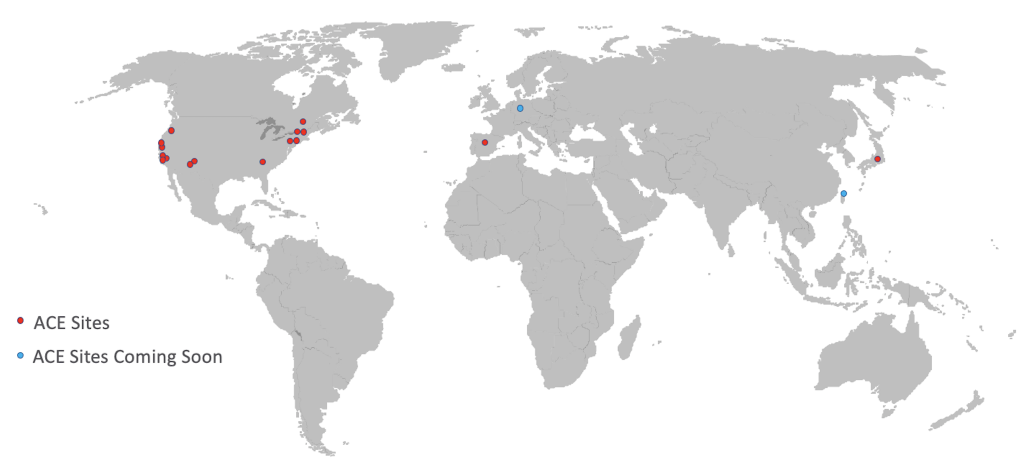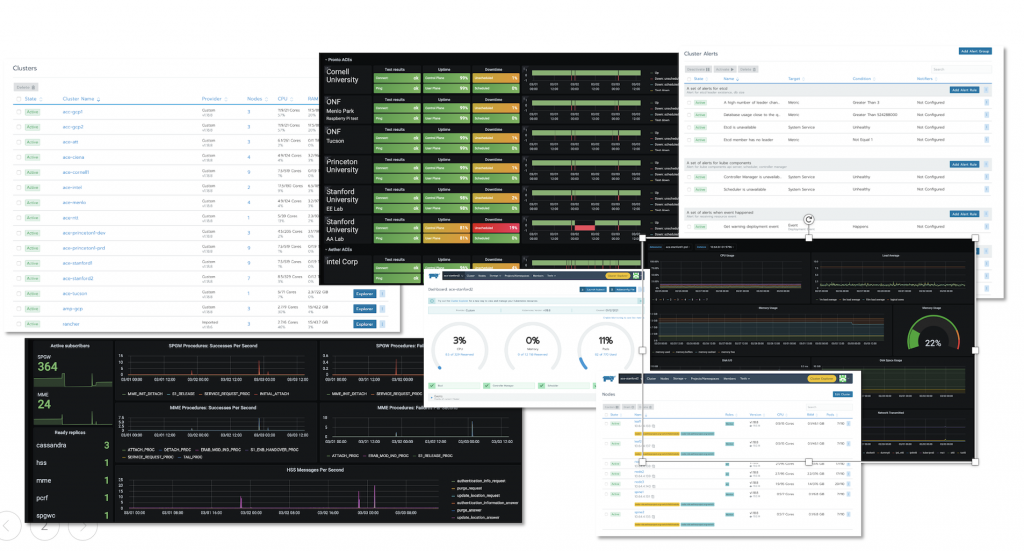It is exciting to see the Aether pilot network growing each month with the addition of new edge sites worldwide. The goal of the pilot network is to accelerate Aether development, make continual improvements for scale and reliability, and guide the addition of new features by leveraging insights and feedback from edge site collaborators. Secondly, it offers the Aether community members a foundation upon which to innovate and validate use cases such as 5G, IoT, AI/ML, Computer Vision, Industry 4.0, etc. This blog provides a high-level overview of the Aether architecture and offers insights on Aether Connected Edge (ACE) deployments.
Aether Architecture Simplified
Aether is an open source platform that is a catalyst for accelerating smart enterprise digital transformation with open source, software-defined cellular connectivity and tightly integrated cloud-native edge compute on COTS hardware. It is designed to be delivered as a cloud managed service and offers the flexibility to support all available spectrum bands including both licensed and unlicensed/CBRS bands.
As shown in figure 1 below, the Aether architecture consists of two major components, the Aether Central Cloud hosted in a public cloud and the Aether Connected Edge (ACE), which is deployed at each edge location.

Figure 1. Aether Architecture
Some of the major Aether architectural components include:
Aether Connected Edge (ACE) - A Kubernetes-based micro datacenter operating on-premise that hosts the Aether Connectivity Service and optionally one or more third-party edge platforms or applications selected by the enterprise. Each ACE site includes compute, network fabric and small cells to provide connectivity to end-user devices.
Aether Connectivity Service (ACS) - An on-premise edge hosted 5G/LTE connectivity service that includes support for local break-out. It consists of the virtualized central units (CU) of the small cells and O-RAN compliant near real-time RAN Intelligent Controller (nRT-RIC) based on ONF’s SD-RAN and ONF’s P4-based User Plane Function (UPF). Each ACS is controlled by an ACC running in the central cloud.
Aether Connectivity Control (ACC) - An open source 3GPP-compliant 4G/5G Mobile Core control plane. ACC runs in the central cloud where the corresponding UPF runs on-premise as part of each ACE. ACC can be deployed in ‘slices’ for different enterprises and different network applications within any given enterprise.
Aether Management Platform (AMP) - A high availability cloud service used to control, configure, monitor and lifecycle-manage both multiple ACE clusters at edge locations and multiple control planes running as part of ACC. It defines Aether workflows for adding and controlling subscribers, small cells, mobile core user plane and 3rd party edge services.
Inside ACE
ONF has created an ACE component checklist that identifies hardware required for deploying any new ACE site. A growing list of vendor components is available. These are components that have been tested and verified by ONF for compatibility and are continually reverified on an ongoing basis as part of the rigorous CI/CD process. ACE sites require one of each of the following types of equipment, but Aether supports the flexibility to mix and match vendor products from each of these categories:
- Compute Servers - Dell, HPE, SuperMicro, Wiwynn
- Fabric Switches - APS Networks, EdgeCore
- Small Cell - Accelleran, Baicells, OAI, Sercomm
Below is what the equipment in a typical ACE looks like

Large Aether site with CBRS Small Cell iPhone connected to
a spine-leaf fabric and compute Aether CBRS service
Global Aether Pilot Deployment
The current pilot network deployment, which launched in late 2019, includes members from both industry and academia. As of today, we have 16 Aether Connected Edges (ACE) live on the Aether Pilot Network. Sites include service providers and technology partners like AT&T, Ciena, Intel, NTT, Telefonica and universities such as Stanford, Cornell, and Princeton. Currently, we are working with Deutsche Telekom and National Chiao Tung University (NCTU) to onboard them into the pilot network.
 Figure 2. ACE Sites Around the World
Figure 2. ACE Sites Around the World
In late 2020, we started automating the ACE deployment process using CI/CD tools. This enabled us to bring up 7 ACEs for Project Pronto (http://prontoproject.org) last December. This toolset is now being used for all ACE deployments and significantly eases complexity, reduces configuration errors and accelerates site initialization.
The pilot network is managed and monitored centrally by AMP running in the public cloud. It monitors the end-to-end health of each ACE from cluster level down to each container. Alerts identify issues in real-time if the network is operating outside of pre-defined tolerances, thus enabling identification of problems even before failures are detected by users. Below are a few of the operational dashboards that are available for the Aether operators.
[caption id="attachment_15456" align="aligncenter" width="750"] Figure 3. Aether Operations Dashboard[/caption]
Figure 3. Aether Operations Dashboard[/caption]
To learn more, check out some of these resources:
Aether Resources
- View this Aether architectural and operations overview video
- Review the Aether Technical Brief for deeper insights
- Join the Aether mailing list to receive the latest news and updates

